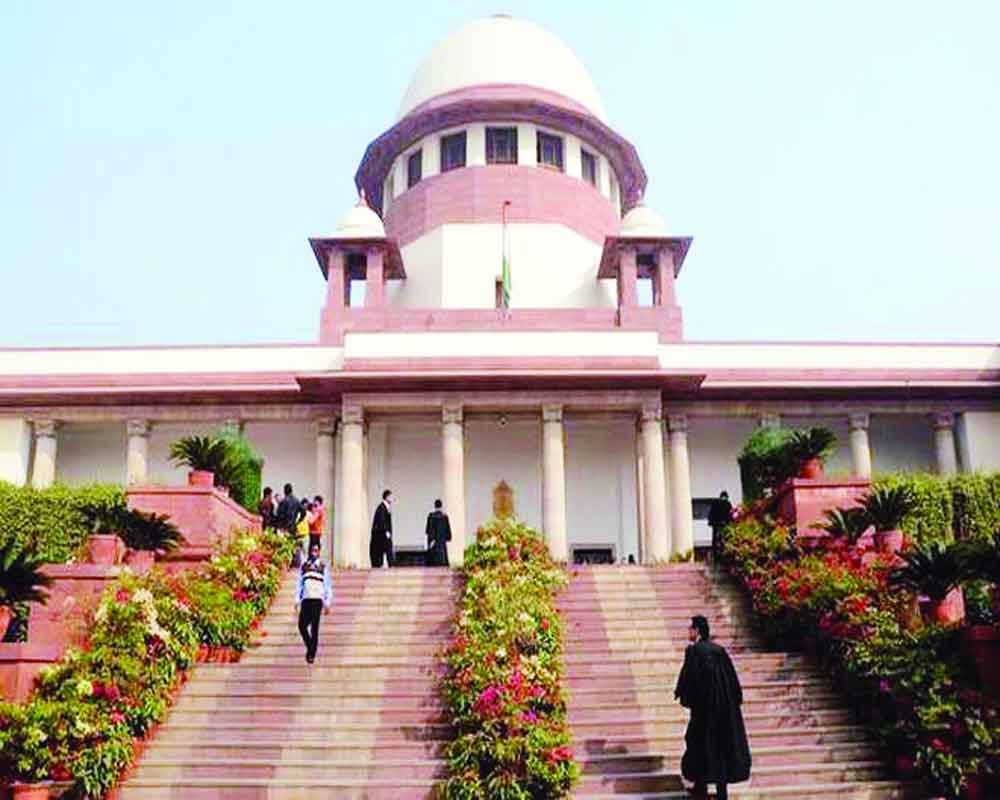For the court processes to be more meaningful, effective and credible, the idea of setting up both regional and functional Benches must be explored
The Congress, in its manifesto for the 2019 general elections, proposed the setting up of a National Court of Appeals (NCA), which would act as an intermediary body between the Supreme Court and the various High Courts in the country to hear routine appeals in civil and criminal matters from the latter. The NCA, as proposed by the Congress, will sit in multiple Benches of three judges each in six locations. Further, the party also proposed to move a Constitutional amendment to restrict the jurisdiction of the Supreme Court to only those cases that involve interpretation of the Constitution and adjudication of cases of national importance. This article aims to interpret the legal matrix surrounding the Congress’ proposal of the NCA.
The setting up of a National Court of Appeal will require an amendment to Article 130 of the Constitution of India, which would, in fact, be tantamount to tampering with the basic Constitutional framework of the Supreme Court. Such an amendment would also divest the apex court of its extraordinary powers with regard to hearing appeals. The same was also stated by the Ministry of Law and Justice while rejecting the aforementioned request way back in 2014. As such, the issue of whether or not such a court should be established shall remain outside the purview of this article. Nevertheless, the Congress’ manifesto has opened up the larger issue of whether or not decentralising the Supreme Court is Constitutionally feasible and practically desirable.
In 1950, when the Supreme Court came into being, it consisted of the Chief Justice and seven judges. It worked for four hours a day, 28 days a year. Today, with tremendous growth in population and increase in demand, the top court has a sanctioned strength of 31 judges but pendency of cases has increased from 690 in 1950 to a staggering 61,300 cases as of March 2015. This has made it one of the most overburdened Constitutional courts in the world.
This situation may be attributed in no small part to the Supreme Court itself as it deviated from its primary function of adjudicating cases of Constitutional significance and, thus, converted itself into a regular court of appeals. The apex court was never intended to be a regular court of appeal and the extraordinary jurisdiction for granting special leave was conferred upon it so that it could interfere whenever it felt that the law had not been enunciated properly by the High Courts or lower judiciary and where it was necessary to correct the position of the law.
This conversion had a cataclysmic impact on the justice delivery system, owing to excessive backlog of cases. Frequent adjournments due to the geographical concentration of the Supreme Court in the capital city has only added to the pre-existing backlog of cases.
Pendency apart, the Law Commission, in its 229th report, also pointed out the logistical difficulties poor litigants have to face while travelling all the way to Delhi to appear for their respective cases. Further, litigants regularly request their advocates in the High Courts to appear in the Supreme Court, resulting in multiplication of costs in terms of hotel and travel expenses. To quote the Law Commission’s report, “...huge amount is spent on travel; bringing one’s own lawyer, who has handled the matter in the High Court, adds to the cost; adjournment becomes prohibitive, costs get multiplied...”
Article 130 of the Constitution of India states, “The Supreme Court shall sit in Delhi or in such other place or places as the Chief Justice of India may, with the approval of the President, from time to time, appoint.”
A bare reading of the aforementioned article will make it clear that the Supreme Court can sit not only in Delhi but also in any other place. Moreover, this view was also endorsed by Justice PN Bhagwati in a 1986 judgement. The Law Commission itself had stated, “If Article 130 is liberally interpreted, no Constitutional amendment may be required for setting up Cassation Benches in four regions and a Constitution Bench at Delhi. Action by the Chief Justice of India with the President’s approval may be enough. It may also be noted that under Article 130, the Chief Justice of India acts as a persona designata and is not required to consult any other authority/person. Only presidential approval is necessary. However, in case this liberal interpretation of Article 130 is not feasible, suitable legislation/Constitutional amendment may be enacted to do the needful.”
Thus, the Constitutional scheme of things provides for the setting up of Benches on both a geographical and functional basis. Moreover, a literal interpretation of Article 130 makes it clear that no Constitutional amendment would be required in order to set up such Benches. As such, setting up regional benches of the Supreme Court, which may deal with appeals with a Constitutional Bench in Delhi, is the best way forward.
Many legal experts feel that the setting up of regional Benches will dilute the apex court’s Constitutional superiority. However, decentralisation — being both functional and structural in nature — with only one Bench in Delhi dealing with Constitutional matters must put to rest all such concerns.
Thus, the setting up of regional benches will in no way dilute the finality or superiority of the apex court’s decisions. The Supreme Court of India has been a robust institution, which remains unparalleled in the service that it has rendered to the nation. The founding fathers of the Constitution never envisaged the Supreme Court to be geographically concentrated in Delhi. With the rising number of cases and practical difficulties being faced by poor litigants, it is about time that the idea of setting up both regional and functional Benches be explored in right earnest.
(The writer is serving as law clerk-cum-research assistant at the Supreme Court of India)


























